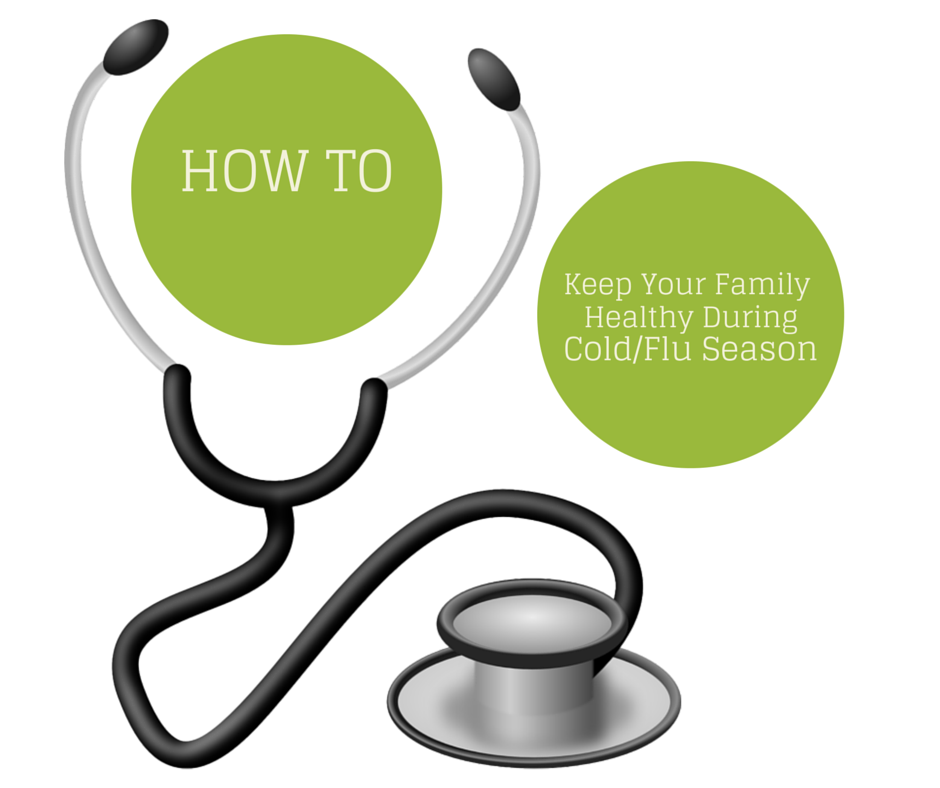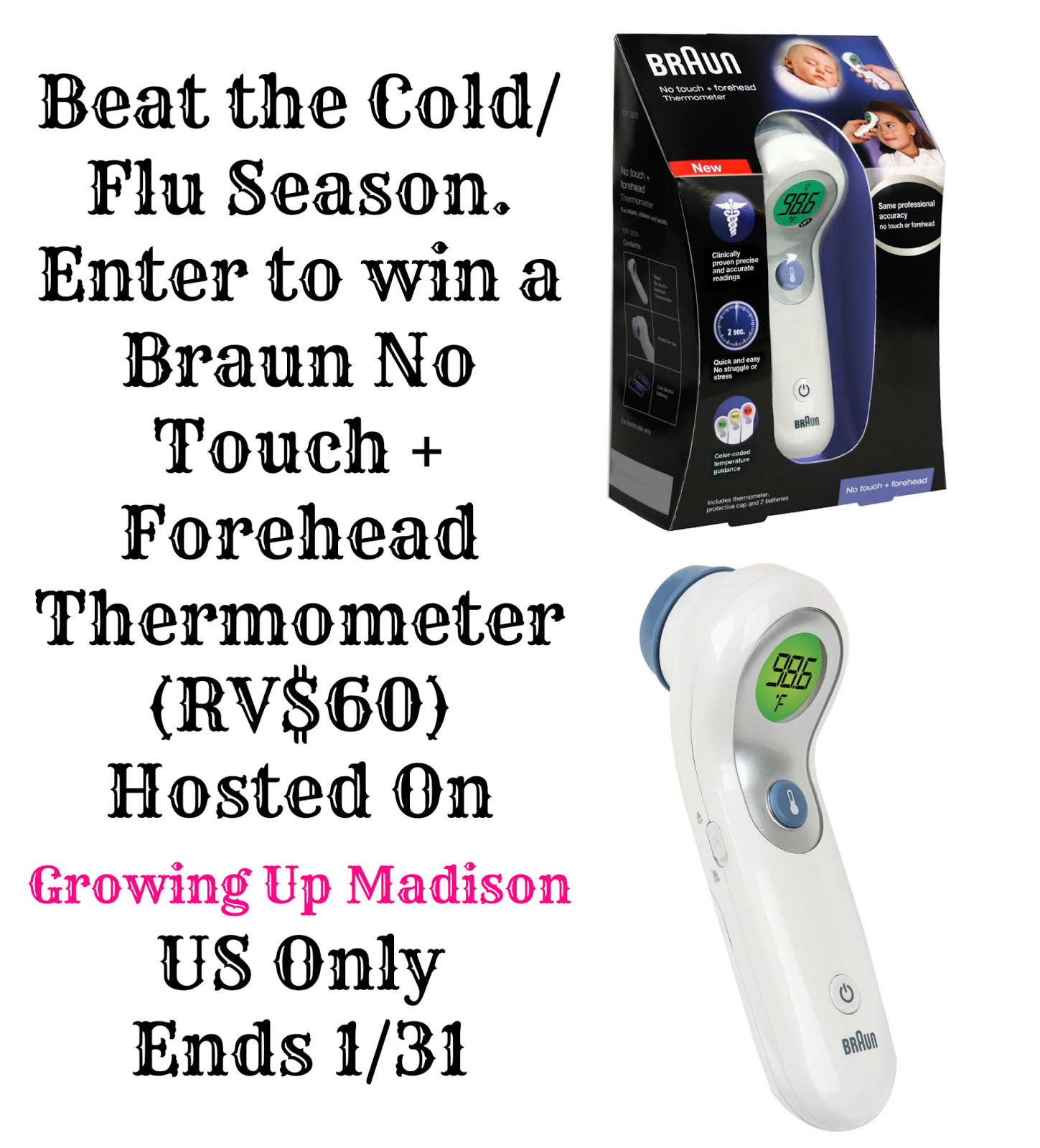It’s the cold and flu season and with the kids back in school there are the runny noses, sneezing, and it seems that when one child gets sick the entire household get sick soon after. We recently got the chance to interview a pediatric expert on ways to keep your family healthy during the cold and flu season. Dr. Tanya Altmann is an LA-based pediatrician and Associate Medical Editor of the American Academy of Pediatric’s Caring For Your Baby and Young Child: Birth to Age 5. She is also the spokesperson for Braun Thermometers and today one lucky reader will get the chance to win the brand new Braun No touch + forehead thermometer.

What’s the difference between a cold and the flu?
Patients often come into the office saying they have the flu when really they just have a cold. The symptoms between a cold and flu are different and it’s important to recognize them so you can treat your illness effectively. The flu is much more severe than a cold and it tends to come on more quickly. Cold symptoms are sore throat, runny nose, congestion, and sneezing and coughing, while the flu usually produces high fever, chills, headaches, body aches and severe fatigue. If you think you or your child has the flu, call your pediatrician.
What tips do you have to prevent either from occurring?
I swear by some tried and true methods of prevention during cold & flu season. One that tops the list is washing hands. Parents should have their kids wash their hands every time they enter or leave the house and before any meal. Germs are everywhere and children will touch anything. Secondly, make sure everyone is getting enough sleep and eating a healthy diet to help keep their immune system strong.
Is it possible to have them both at the same time?
It’s possible to have two illnesses at the same time, especially during cold and flu season where many viruses are circulating. If your child has an illness with a fever, seems to get better and then the fever reoccurs, it’s important to let your pediatrician know. While it may just be that your child caught two different illnesses back to back, it could also be a sign that your child caught a secondary bacterial infection such as pneumonia after having a cold or the flu.
In the event that a family member has either one, what are the ways to prevent it from spreading?
Keeping your home germ free during cold & flu season may sound time consuming. However, there are certain places were germs typically linger that you’ll want to disinfect more regularly. Door knobs, sink handles, light switches and phones are all constantly touched places in your home where germs can be easily spread. Keep a box of disinfecting wipes on your kitchen counter (out of reach of young hands) so you’ll be reminded to clean these areas.
One prevention measure you may not have thought of is maintaining humidity levels in your home. Recent studies have shown that keeping humidity levels between 40 and 60% can reduce the survival of the virus on surfaces and in the air. While humidity levels drop when cold temperatures set in, using a humidifier can help increase the relative humidity, and relieve coughs and congestion at the same time!
What essentials should you have in your medicine cabinet?
Sometimes I’ll have parents tell me they prefer to have their child’s temperature taken in the office because they think our tools are more accurate. However, the new Braun No touch + forehead thermometer takes fast, accurate readings at home by holding the thermometer two inches from the child’s forehead. No touch thermometers measure energy radiated from the forehead above the temporal artery, a major artery of the head. The Braun No touch + forehead thermometer captures twice as much of this energy to ensure you’re getting an accurate reading. Plus, you can also use the traditional touch option on the thermometer to double check your reading if you’re having doubts. I recommend it for parents who are looking to switch to a no touch thermometer but still have some reservations. It’s the easiest way to keep temperature taking as hygienic as possible.

Another essential to have on hand during cold and flu season is a fever reducing medication, such as acetaminophen. Make sure you know the appropriate dose for your child and store the medication up high, out of a child’s reach.
How effective are natural remedies such as Vitamin C for prevention?
Eating a diet full of Vitamin C is important, especially during cold and flu season. It’s always best to get your vitamins through healthy foods such as oranges and Clementine’s – which kids love! Vitamin D has also been shown to help keep the immune system strong and milk and other dairy products are the best source of Vitamin D for kids. In addition, research shows that kids who take daily probiotics have less fever illnesses during winter. If you are considering giving your child a supplement or vitamin, always check with your pediatrician first.
What signs and symptoms should I look out for and when should you consider consulting a doctor?
During cold & flu season, we receive lots of calls from parents who are trying to decide if their child has come down with an illness. My first question is always how is their child acting? Behavior is often the best indicator of whether a child needs to be seen right away.
Fever is another important symptom and also often one of the first signs of the flu. When your child has a fever they are often the most contagious. That’s why it’s important to have a reliable thermometer at home like the Braun No touch + forehead thermometer. When it comes to fevers, I’m often more concerned with the length of the fever than how high the number is. I recommend parents take their child to the pediatrician if a fever lasts more than 3-4 days, if the child looks very ill, is unusually lethargic, or has severe aches and pain as it could be a sign of something more serious than a common cold. This excludes newborns and infants; you should always consult your doctor immediately (or seek medical attention right away) when dealing with a newborn or infant with a fever.
Personally I like keeping my kids home when they aren’t feeling well, but should you keep your children home when they have a cold or the flu?
When it comes to a cold or the flu, I typically advise parents that if your child is feeling better and their fever has been gone for at least 24 hours, they’re okay to be around other children. While you want to make sure they stay home from school when they’re sick, there’s no need to keep them home for longer than necessary—especially since they will hold on to some symptoms, such as a little cough or runny nose, for days or even a week.

Now that you’ve gotten some tips on how to keep your family healthy and understanding the difference between the cold and the flu, and also learning what to do if a family member ever has one of them, it’s time for our giveaway. The new Braun No touch + forehead thermometer is the latest product to have in your family’s cold & flu arsenal. It offers two non-invasive ways to take a temperature reading, making it easier than ever before without sacrificing accuracy. One mode requires no contact, which means you can hold the thermometer up to 2 inches from the forehead to take a reading. The other requires gentle contact to the forehead in the same location. Either way, you get an accurate in less than two seconds!
So what do you do when you have the cold or the flu?
Disclosure: Growing Up Madison receives products in order to conduct reviews. No monetary compensation was provided unless noted otherwise. All opinions are 100% my own. Some posts may contain affiliate links that I receive commission for payment from in exchange for referrals. In the event of a giveaway, the sponsor is responsible for delivery of the prize, unless otherwise noted in the posting. Giveaways are not sponsored by Facebook, Twitter, Pinterest, Google+ or any other social media site. Regardless, I only recommend products or services I personally believe will be a good fit for my readers. I am disclosing this in accordance with the Federal Trade Commission’s 16 CFR, Part 255: “Guides Concerning the Use of Endorsements and Testimonials in Advertising.”
